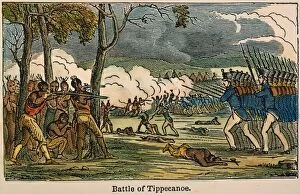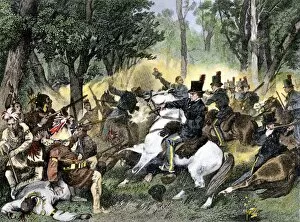Tecumseh Collection (page 3)
Tecumseh, the renowned Native American chief of the Shawnee tribe, left an indelible mark on history
All Professionally Made to Order for Quick Shipping
Tecumseh, the renowned Native American chief of the Shawnee tribe, left an indelible mark on history. Born in 1768, he rose to prominence as a fearless leader and advocate for his people's rights. Tecumseh's unwavering determination to protect his ancestral lands led him to forge alliances with other tribes and form a confederacy against encroaching settlers. Accompanied by his brother, The Prophet, Tecumseh inspired countless warriors with his vision of unity among Native American nations. Their efforts were not without opposition; General William Tecumseh Sherman's infamous March to the Sea through Georgia in 1864 showcased the ongoing struggle between indigenous peoples and expanding American forces. Despite facing numerous challenges throughout their lives, both Tecumseh and Sherman demonstrated remarkable leadership qualities. While one fought for sovereignty and preservation of culture, the other commanded armies during the Civil War. These two figures may have been adversaries on opposite sides of history but shared a name that echoed through time. Tragically, Tecumseh met his demise during The Battle of the Thames in October 1813. His death marked a significant loss for Native Americans fighting against colonization. However, even after his passing, Tecumseh's legacy endured. Today we remember Tecumseh as more than just a historical figure captured in wood engravings or photographs by Mathew Brady; he represents resilience and courage in defending what is sacred. From oil paintings depicting Shermans' march through Georgia to lithographs immortalizing battles fought on distant shores - every artwork tells part of this captivating story. William Tecumseh Sherman himself became an influential figure within America's military hierarchy post-Civil War era. A soldier turned businessman turned educator turned author – he embodied versatility beyond compare.















